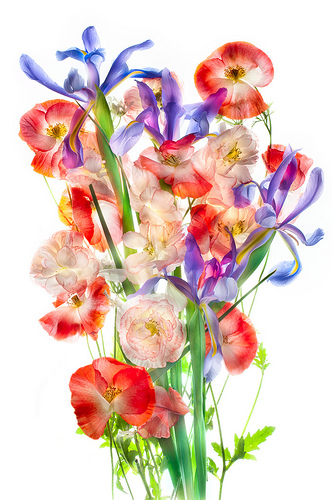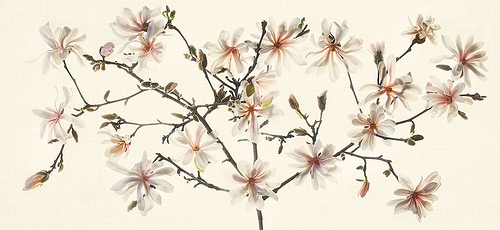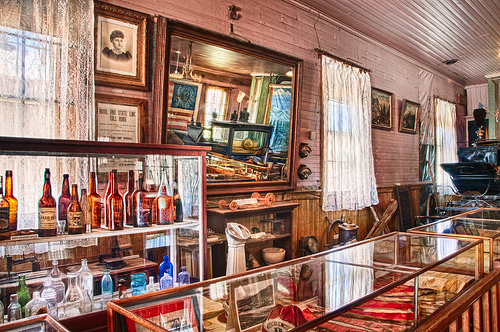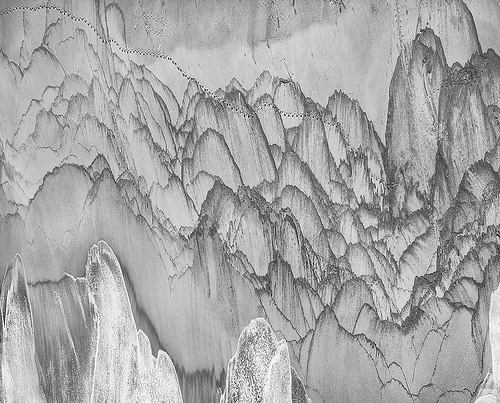I have often been asked about my philosophy and approach to photography. Recently I’ve spent a lot of time considering how to describe my work, and also where it fits in with the photography and art worlds. I’d like to share my thinking with you.
My work lies at the intersections of many styles and disciplines: between east and west, classicism and modernism, photography and painting, and the new technologies of the digital era versus the handcraft traditions of the artisan. To understand my imagery, one needs to see where it fits within each of these dichotomies.
Before I explain, let me mention that my primary goal is not to evoke academic, scholarly, or pedantic understanding. I’d almost rather my work not be understood–so that the response is evoked on a primal level that has more to do with the heart and gut than the intellect.
A great deal of thought goes into my work, but it shouldn’t have to take thought to enjoy it. At the simplest level I am trying to evoke–at both conscious and unconscious levels–a sense of serenity, wholeness, and wonder. My work can be experienced and enjoyed simply and organically for its structure and beauty.
With many of my images, unwrapping the sense of wholeness that the work conveys is not immediate. I am asking someone experiencing my images to have the patience to contemplate–and perhaps resolve a visual puzzle–but I don’t necessarily let on upfront that my viewers will be confronting a conundrum. The intellectual pleasures my work provides are subtle, and not intended to beat the viewer on the head.

To achieve my goals, I am prepared to bring to bear the full power, scaffolding, and tricks-of-the-trade from a number of disparate disciplines. My work uses the latest technologies and also harkens back to historic art traditions, including impressionist painting and Asian art. I am very aware of traditions of European art such as Impressionism and Expressionism, and also art traditions such as Japanese woodblock printmaking and Chinese landscape painting. When appropriate, I echo these in my work.

I appreciate the classical traditions of art, and I am also very comfortable working in the modernist vernacular. While my aesthetics are somewhat conservative, my techniques are radical. I am delighted to find that I can combine my love of painting with my love of photography. My work often starts with multiple digital photographic exposures and then proceeds with digital painting on the computer. I take great pleasure in experimentation while using original, cutting-edge technologies. I was trained as a classical photographer and painter, but I now use advanced digital capture techniques that allow me to extend the range of visual information beyond what the eye can normally see.
Craft is vitally important to me, and I work hard to create meticulously crafted prints from my imagery. Making prints from my work takes a great deal of hand effort, as well as the ability to harness technology. Again it is east meets west and old meets new: some of my printing substrates are newly derived, such as pearlized metallic paper, and others are ages old and steeped in history, such as Washi rice paper. It’s worth the time and effort, because my prints have the ability to evoke a powerful response in those who view them.

I believe that advances in the technology and craft of digital photography have created an entirely new medium. My years of contemplation have opened my eyes and my heart, and taught me to see more deeply. I use this alchemy of wonder to combine the traditions of painting and photography with new technology.
Related post: Harold Davis bio.

Pingback: Things You’ll Find Interesting May 1, 2012 @ Chuqui 3.0
Robert W.
2 May 2012Harold,
This is well written and very illuminating, but I am curious as to what sparked this effort on your part. Have you received many questions from others about your philosophy? Or did Phyllis simply ask, as my wife often does, why are you doing that? And you then asked yourself, why am I doing this?, and felt the need to make this statement. Kidding aside, I enjoyed this writing and am now asking myself that same question, why am I doing this?
Harold Davis
2 May 2012Hi Robert,
Yes, Phyllis made me write it! It’s all her fault. 🙂
Seriously, I do get asked about my motivations a great deal.
Also, as I’ve noted before, I am putting effort into reaching out to art galleries—understanding where my work fits in this scheme of things is an important part of this outreach.
Very best wishes,
Harold